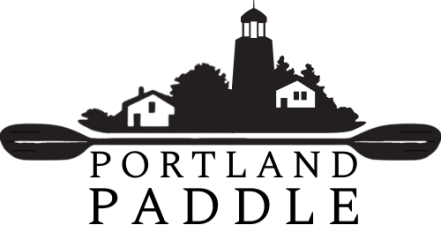A Winter Paddle to Damariscove
Trip Report: A Winter Paddle to Damariscove Island
We launched mid morning on a chilly December day. The sky was the color of pale slate, the water flat and calm. Four of us had met just outside of Boothbay Harbor to paddle to Damariscove’s isolated harbor. The island is low and long, barely betreed, defined by a thin waste at the middle and a narrow channel facing the open sea on the south side. The small cove is home to a handful of moorings and a stone pier, shaped by steep hills rising on either side, surprisingly protected from the incoming swell, and guarded by a now retired Coast Guard lifesaving station. Other than a private residence in the station, the island is a bird sanctuary owned by the Boothbay Region Land Trust.
Sleepy is too loud a word to describe the feeling of nestling into the inner harbor, safe as an Eider duckling in its nest, the very birds the island is conserved to protect. Appearances can be deceiving though, and history can at times leave only subtle clues. Once this harbor was the busiest fishing village on the New England coast, settled as early as 1604 by English cod hunters. The tiny museum on shore contains pictures of multi masted schooners packed into the cove like sardines. Before that the island was visited by the Abenaki, who collected Eider duck eggs and hunted seals along its shores, all from birch bark canoes.
Setting out that morning none of us could be mistaken for either Abenaki or early settlers. The sea kayaks we chose to paddle come from a third tradition, those of the Greenland Inuit and other Arctic peoples. But we weren’t likely to be mistaken for them either, as our boats were all in the “Euro” style of sea kayak design. Beyond that, our boats represented every variation of modern sea kayak construction; rotomoulded, fiberglass, wood strip, and wood core boats were all accounted for in our little flotilla.
Winter on the coast of Maine is a magically quiet time. The lobster boats and pleasure cruisers vanish. Their pots and mooring balls largely go with them, quieting the visual space as well. Different birds appear. Guillemots, bedecked in white winter plumage, come closer to shore. Loons, in their grey backed coats the same color as the sky, descend on the coast from their summer homes in inland lakes. The boisterous afternoon winds of mid summer calm. People are often surprised by how flat the ocean can be in December.
The eastern headland above Damariscove provides the best view on the island. After a quick exchange of hellos with an owl who had taken up residence in the Coast Guard station, we ascended. Unfortunately, the tower built there was closed, but the views from the hill itself were still excellent. We ate a short but jovial lunch, surprisingly warm in our fleece and drysuits.
After completing our hike we returned to our boats to complete our circumnavigation of the island, returning along the eastern shores this time. The paddle back was more tiring than I expected, struggling to keep up with my apparently more fit paddling partners. I’ll blame it on the high angle, high surface area whitewater paddle I was using if you’ll let me.
We stopped to rest on a cobble beach near the north end of the island. A dead seal, large, and brown, and frozen solid, lay half hidden in the bushes. Its body was entirely intact, either too new or too frozen to tempt the sea birds and eagles to get at. Apparently no coyotes or foxes were willing to make the crossing from the Maine land in winter either. Its gums had receded back into a rictus snarl, the claws of its flippers protruding unexpectedly. It looked fiercer and more majestic, but also more alien, and more terrestrial, than its living brethren did on land. We ate some crackers and gummy candy, said goodbye, then set off into the sea for one more time that day. We landed shortly after without incident. We removed our outer water proof layers, loaded the boats back onto the cars. We returned to our terrestrial lives ourselves. I think we looked far less fierce, and far less majestic as well.
This trip report by multiday trips manager Eric, from a paddle he did in December of 2020.
